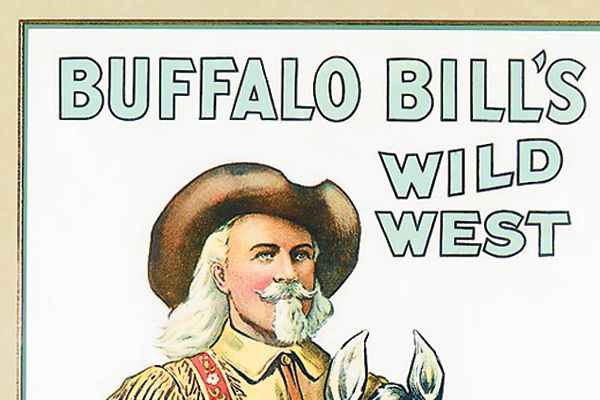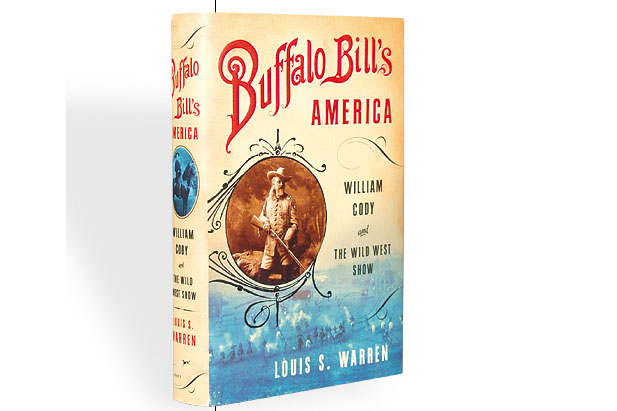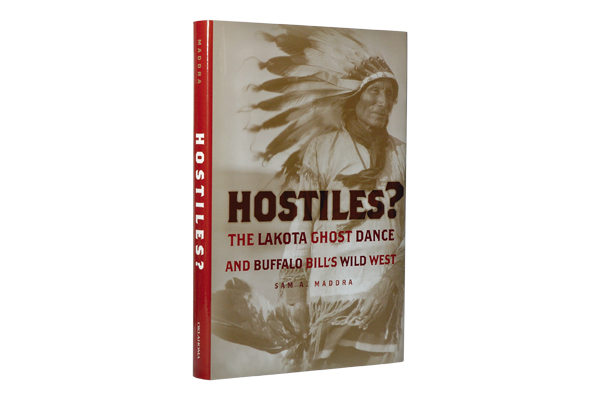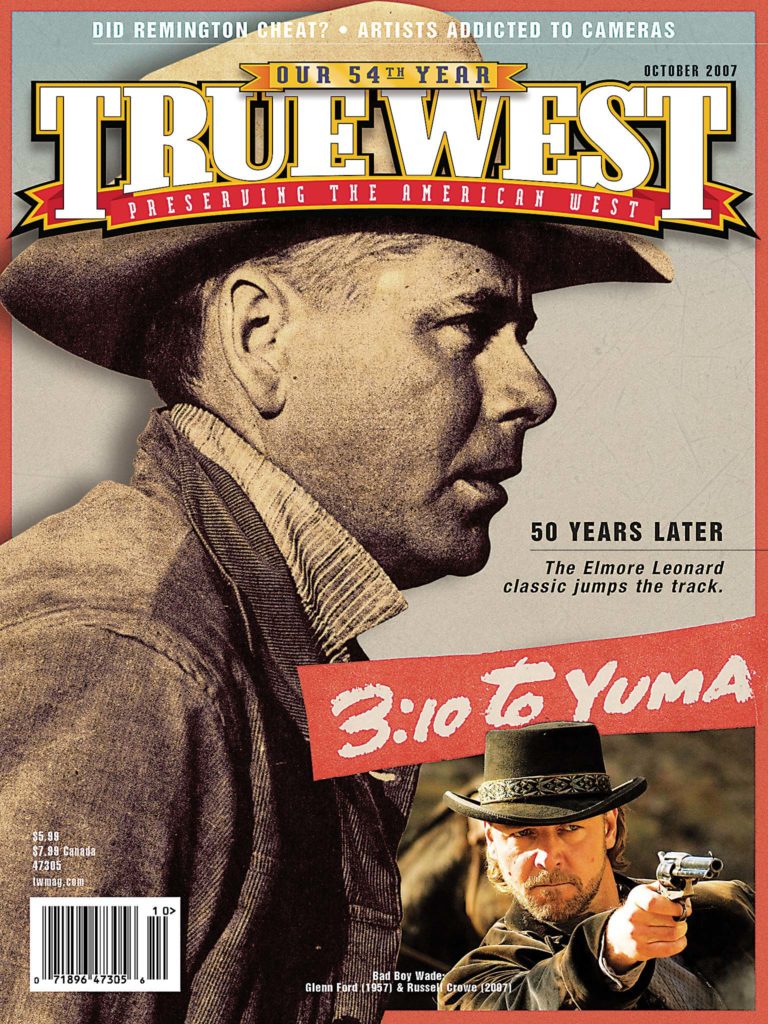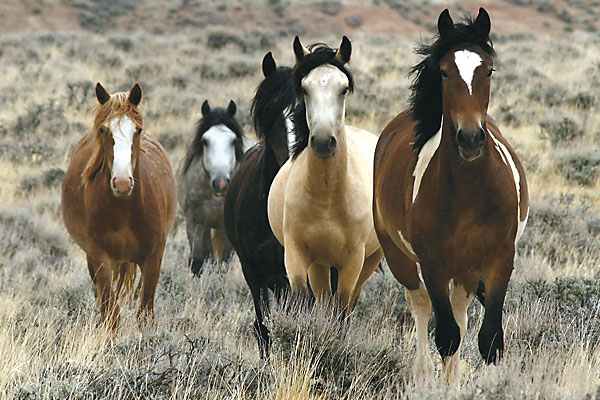 With binoculars in hand, Kenny Martin of Wild Mustang Tours and I look across the badlands of McCullough Peaks in search of the “Wild Bunch,” one of several bands of horses that Kenny has observed for the last six years.
With binoculars in hand, Kenny Martin of Wild Mustang Tours and I look across the badlands of McCullough Peaks in search of the “Wild Bunch,” one of several bands of horses that Kenny has observed for the last six years.
War Bonnet is the dominant stallion of the Wild Bunch, which is composed of 10 mares. This is an unusually large number of mares for one stallion. As I stare at the melting pot of horses scattered across the vast land of yellowish grass, red hills in the distance, I realize that the wild mustangs in Wyoming are even more majestic and interesting than I had imagined.
Most people know that wild horses live in the American West, but many don’t know that other pockets of feral bands run wild across the United States—from Cumberland Island’s wild horses off the coast of Georgia, the untamed horses of the Outer Banks of North Carolina and the Waipi’o Valley herd on the Big Island of Hawaii. Like the mustangs roaming McCullough Peaks, each group has its own story. But where did they come from, and how do they survive?
McCullough Peaks is about 22 miles outside of Cody, Wyoming, and encompasses approximately 110,000 acres. The Bureau of Land Management (BLM) is in charge of these lands and the horses that live on them. While out with Kenny, we meet two BLM employees who are monitoring the horses to make sure that the birth control mechanisms they use to control the horse population isn’t changing herd dynamics. The herd at McCullough Peaks is strong and healthy, something that they don’t want to change. In fact, compared to many horses that I have observed in the wild, the McCullough Peaks herd looks incredibly fit. As a large black, healthy looking mustang with a white star on his face begins to strut toward our group, I wonder if Kenny or some other kind soul might be secretly feeding them.
DNA evidence shows that these horses are directly descended from Spanish stock, Kenny tells me (see “America’s First True Horses,” September 2007). They may also be descendants of the horses used in Buffalo Bill’s Wild West show.
“When Bill Cody’s Wild West show was not active, he would just turn his stock out from Cody here,” Kenny says. “He would round them up. He’d probably lose a horse or two, gain a horse or two. His studs that were out here would interbreed with the mares that were out here and he’d have some of his mares bred by them, so they consider these also the descendants of Buffalo Bill Cody.”
I can only imagine War Bonnet, who looks like he has some Paint horse in him, being ridden by a character in Buffalo Bill’s show, perhaps an Indian depicting a buffalo hunt or Custer’s “Last Stand.” The show, which began in 1883, ran for three decades. It was a true extravaganza, employing a cast of hundreds, touring Europe like modern day rock stars and even booking Queen Victoria’s Golden Jubilee in London. The horses, much like the cast, traveled the world and fueled romantic and adventurous perceptions of the American West.
The Wild Bunch, including a couple of foals, continues to graze, warming to our presence, though always alert. Colorful Bill Cody’s namesake town, which he helped found in 1895, is just down the road from where we’re standing amongst the mustangs. This area is rich with history, and the herd at McCullough Peaks is a living link to the past.
Kenny tells me that the horse tour is the highlight of many people’s vacation in Wyoming and that many of his guests get quite emotional when they see the mustangs. I don’t doubt this, as I myself get that way around horses—whether I’m on a dream beach ride on the coast of Ireland, conquering the challenge of playing cowboy on a ranch or here, standing amongst a beautiful symbol of the American West and America itself.
We snap a few more photos, hoping to capture some of the mustangs’ spirit. Even our fancy equipment doesn’t do it justice, but my photos will help me remember and certainly inspire me to travel back to McCullough Peaks again.


